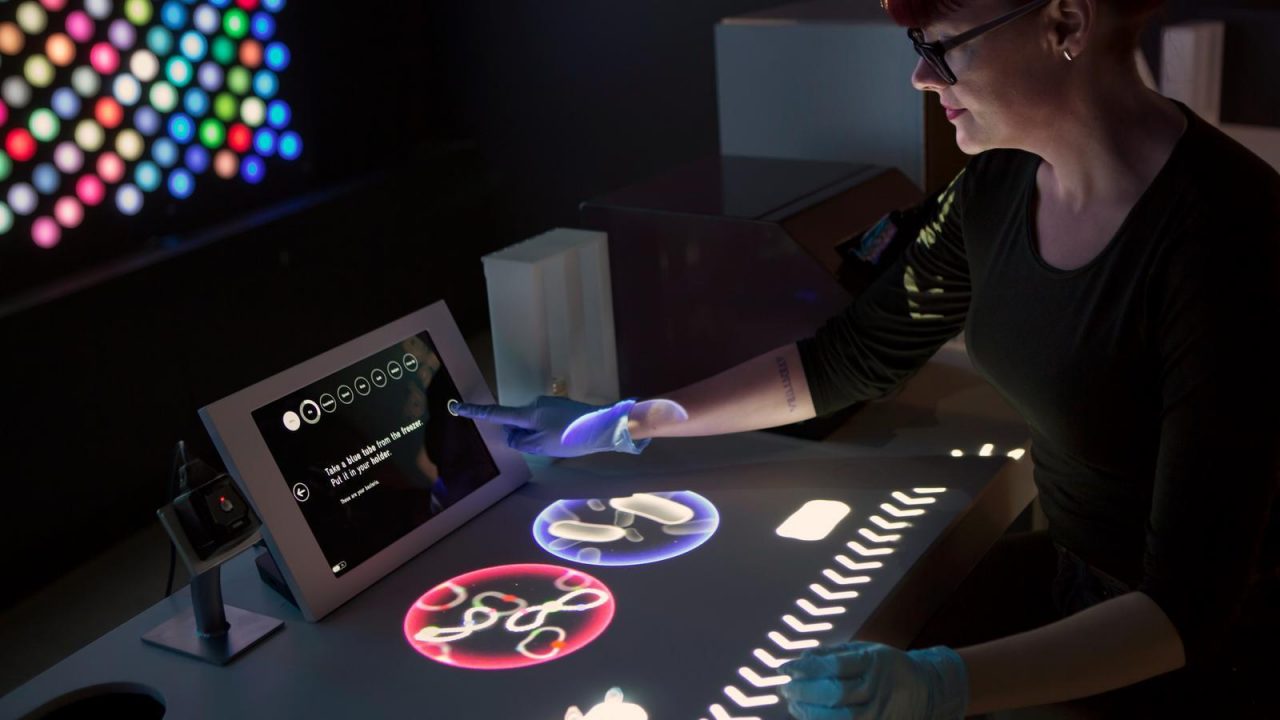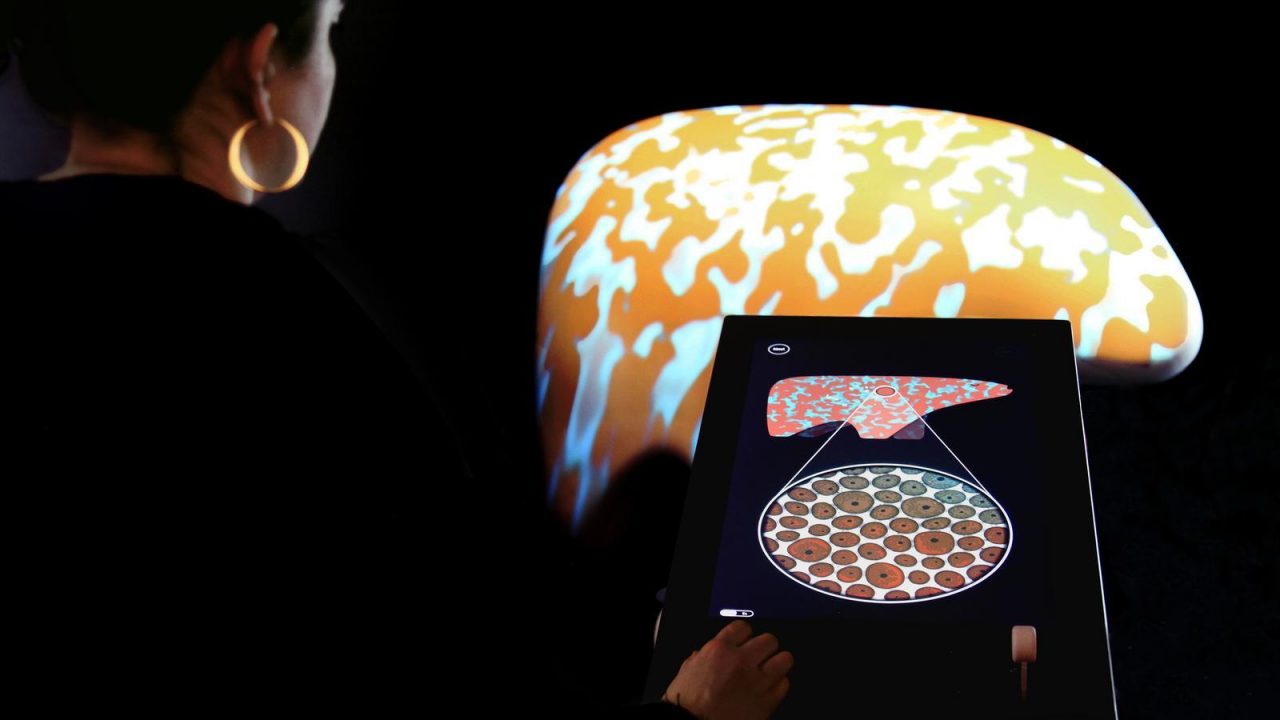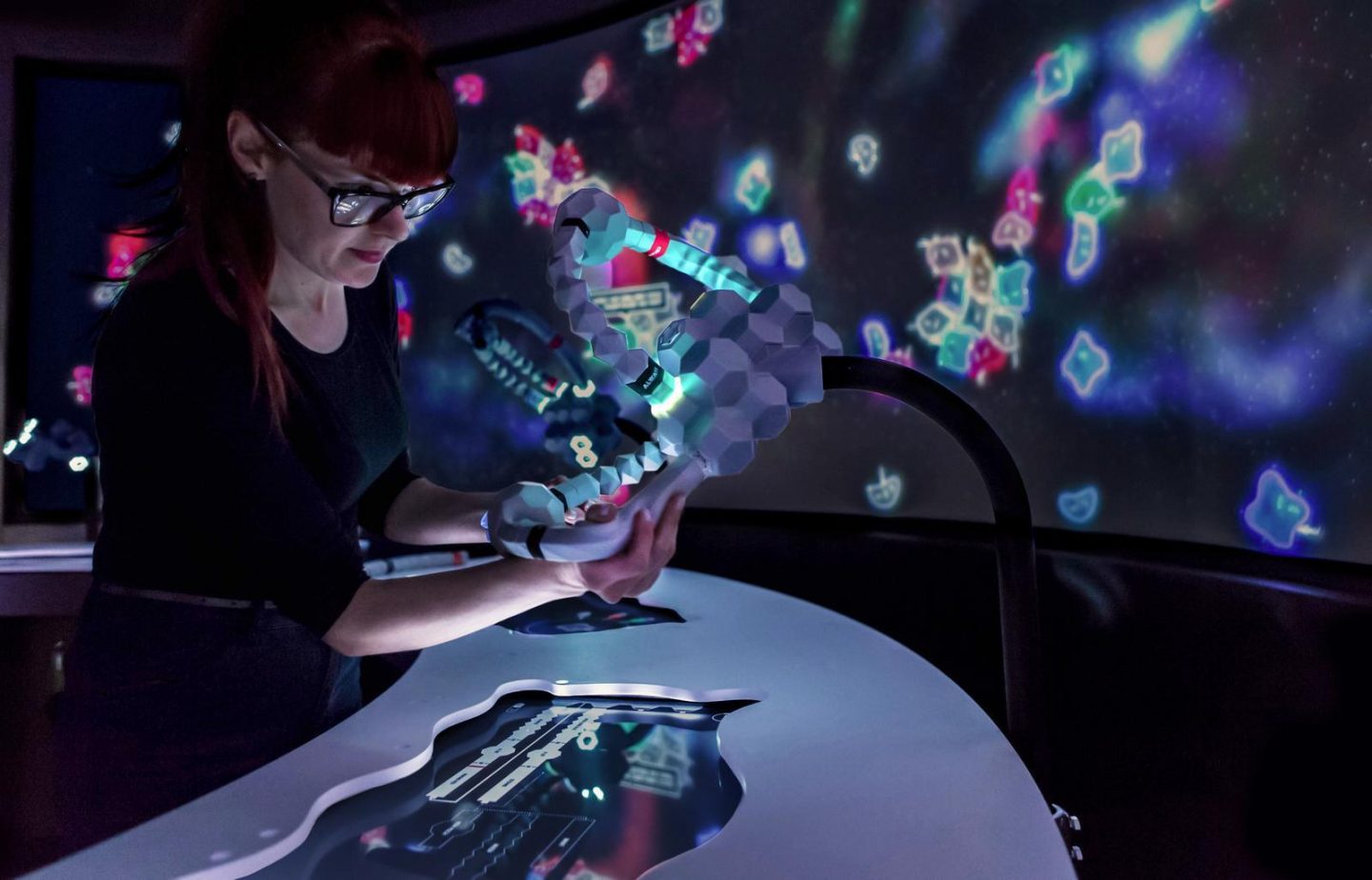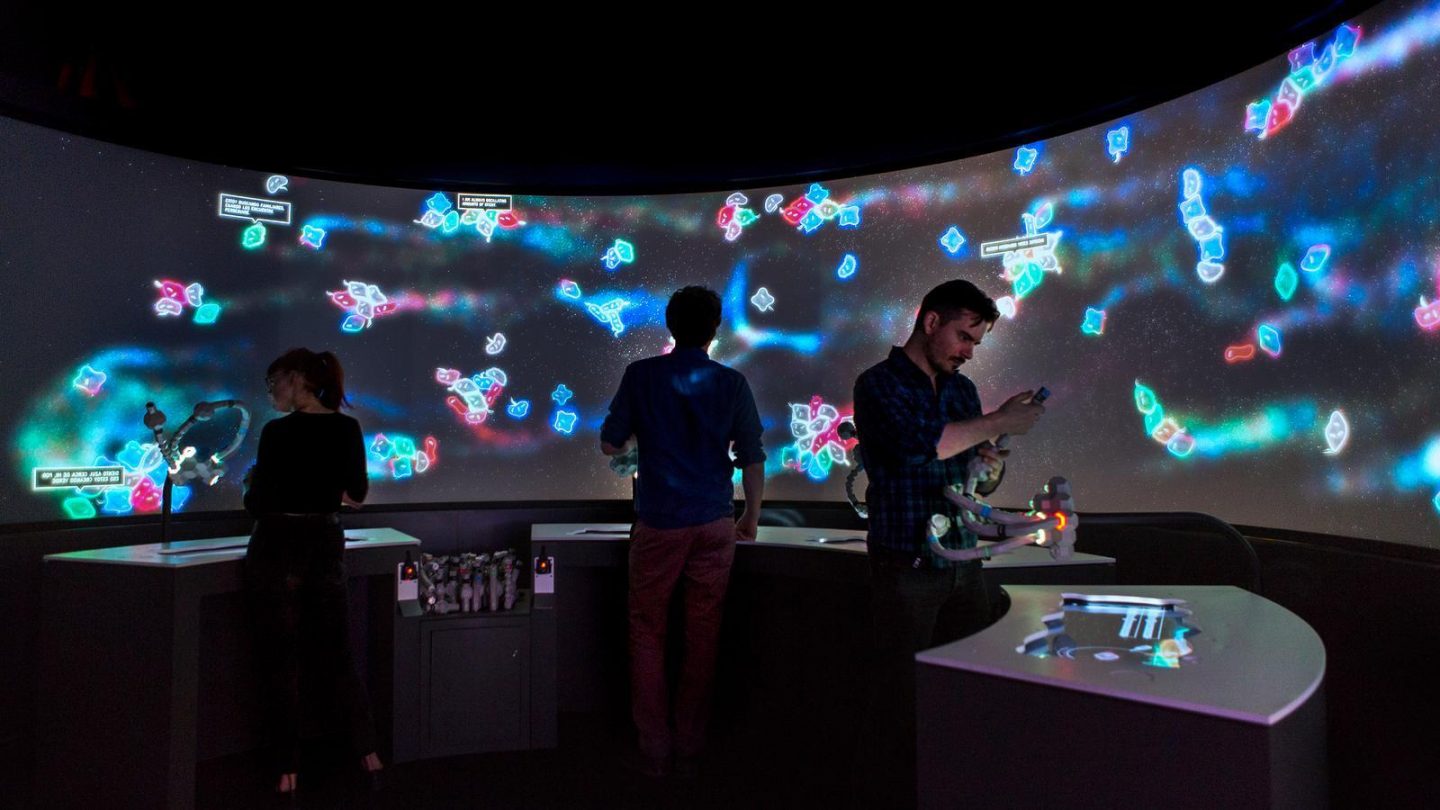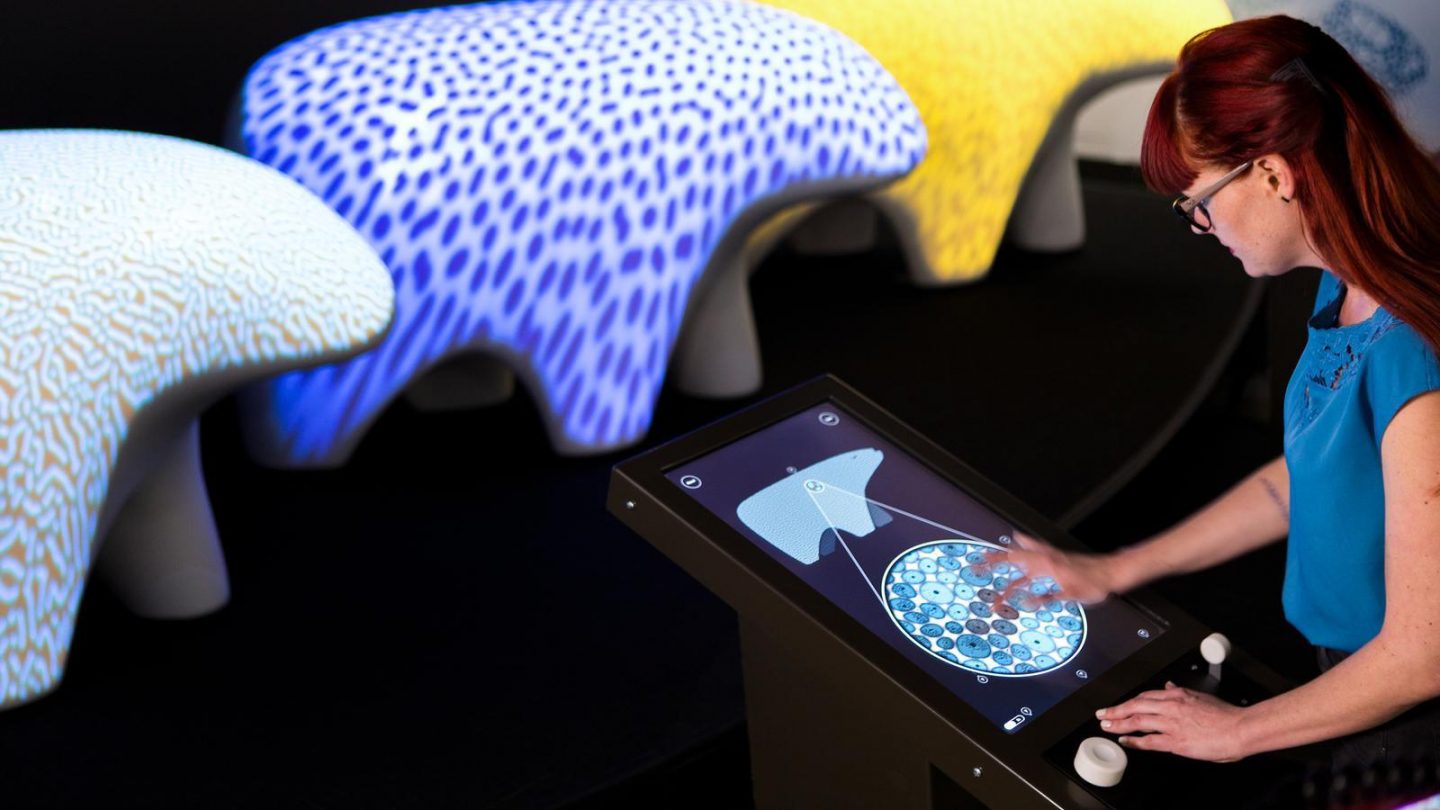BioDesign Studio
Demystifying the building blocks of life through play.
Overview
Synthetic biology is one of the most powerful technologies of our time. To make it accessible, we built a hands-on lab where visitors become bio-engineers. Guests don't just read about genetics–they physically manipulate DNA, grow colorful bacteria, and design virtual creatures. We transformed a complex scientific field into a creative playground.
Services
Exhibit Design, Media Design, Media & Software Development
The Details
We designed the space to bridge the gap between digital code and genetic code. At the Creature Creation Station, visitors snap together physical blocks representing DNA traits to engineer virtual organisms, then release them into a massive 30-foot interactive "bio-pool" to see if they survive. In the Living Colors Lab, they move from simulation to reality, editing the actual genome of bacteria to create new colors. It’s a space where "do not touch" is replaced by "please experiment."
